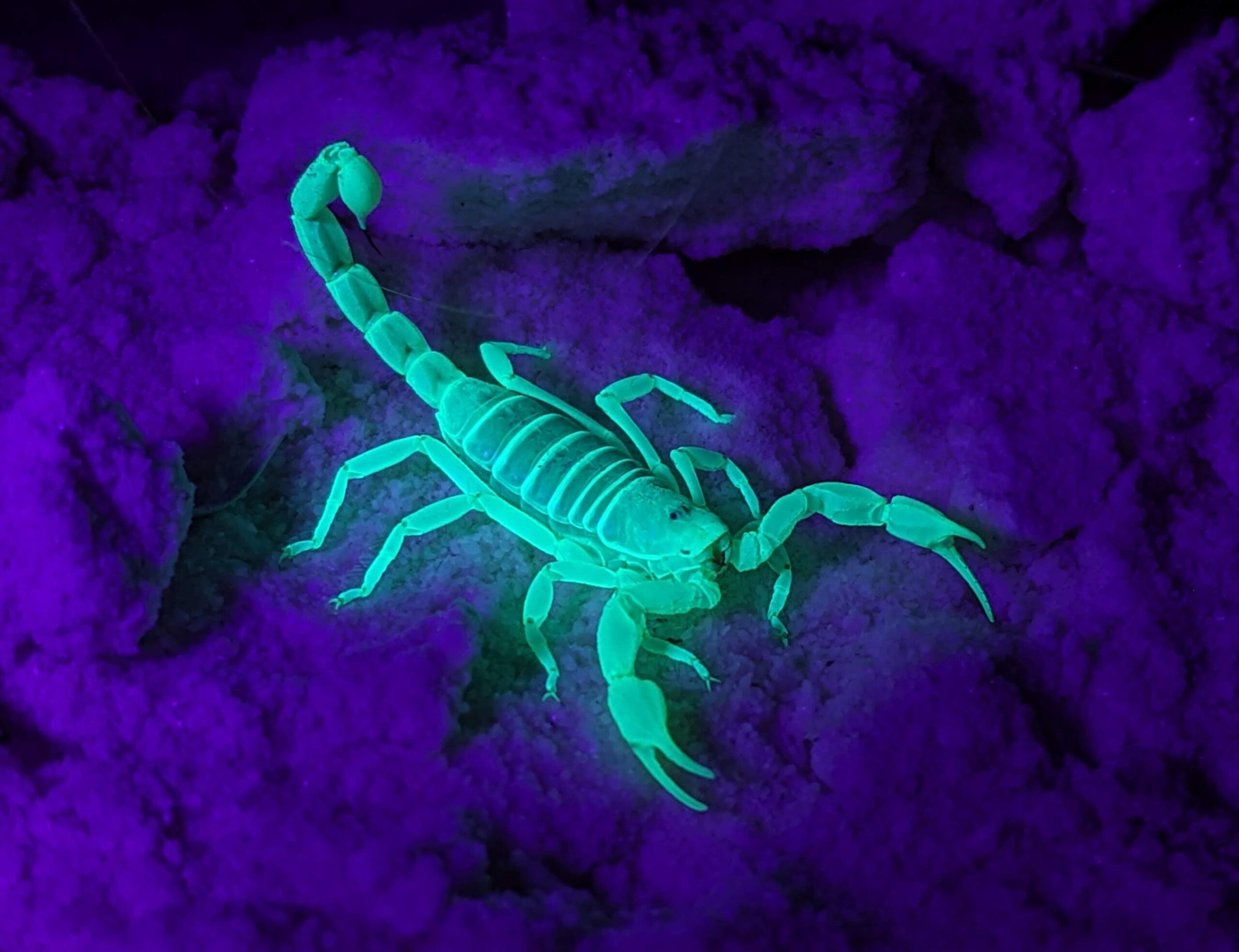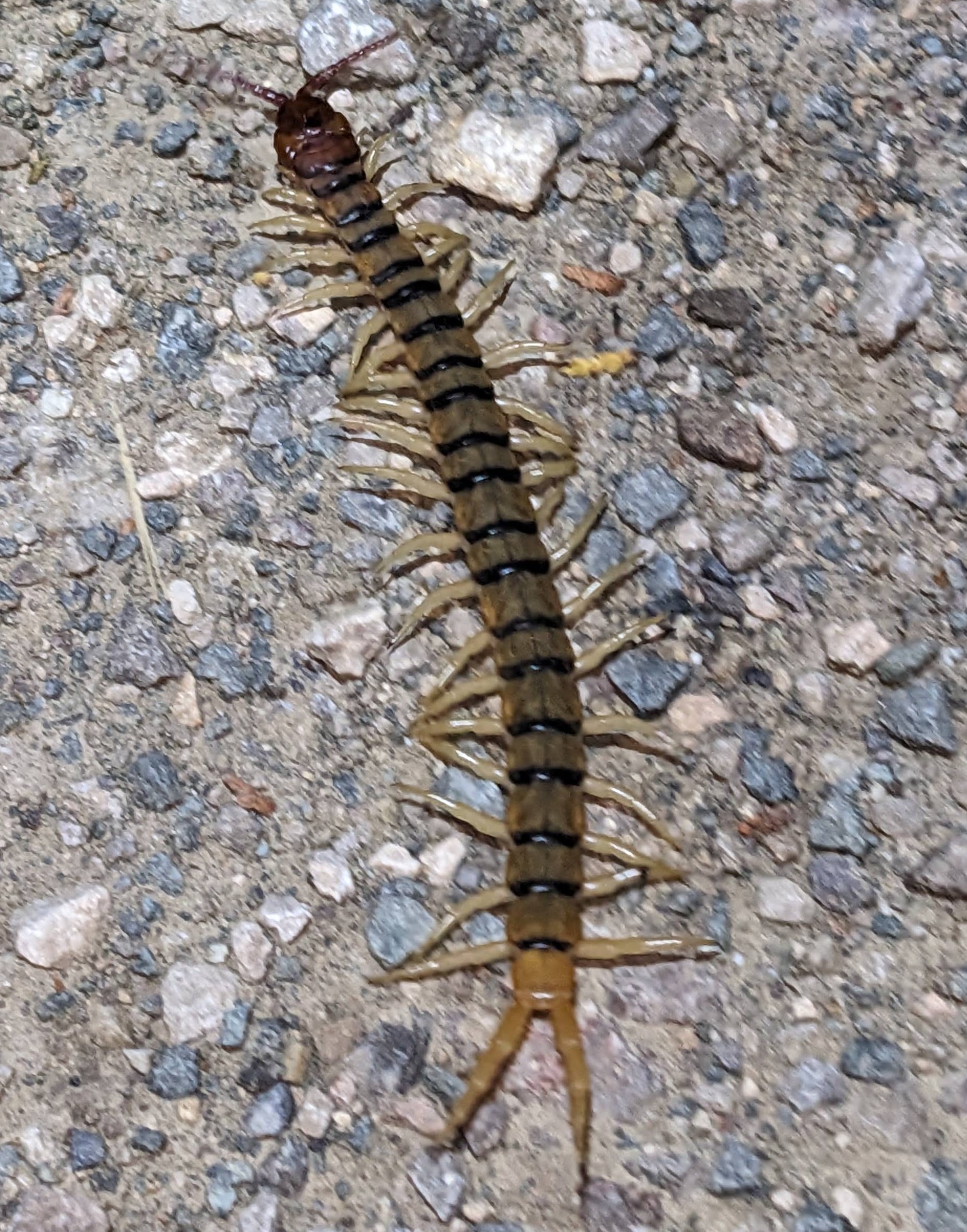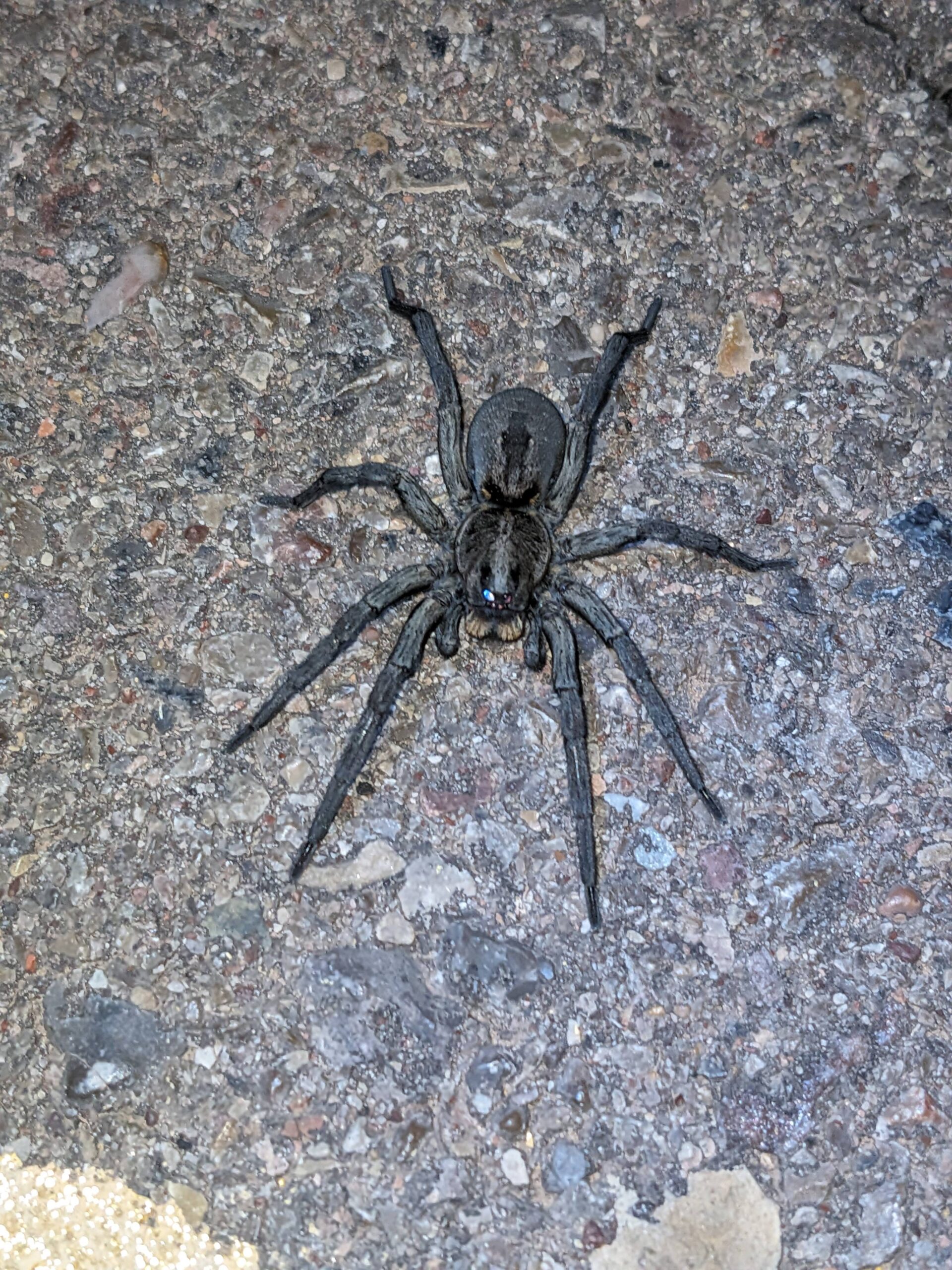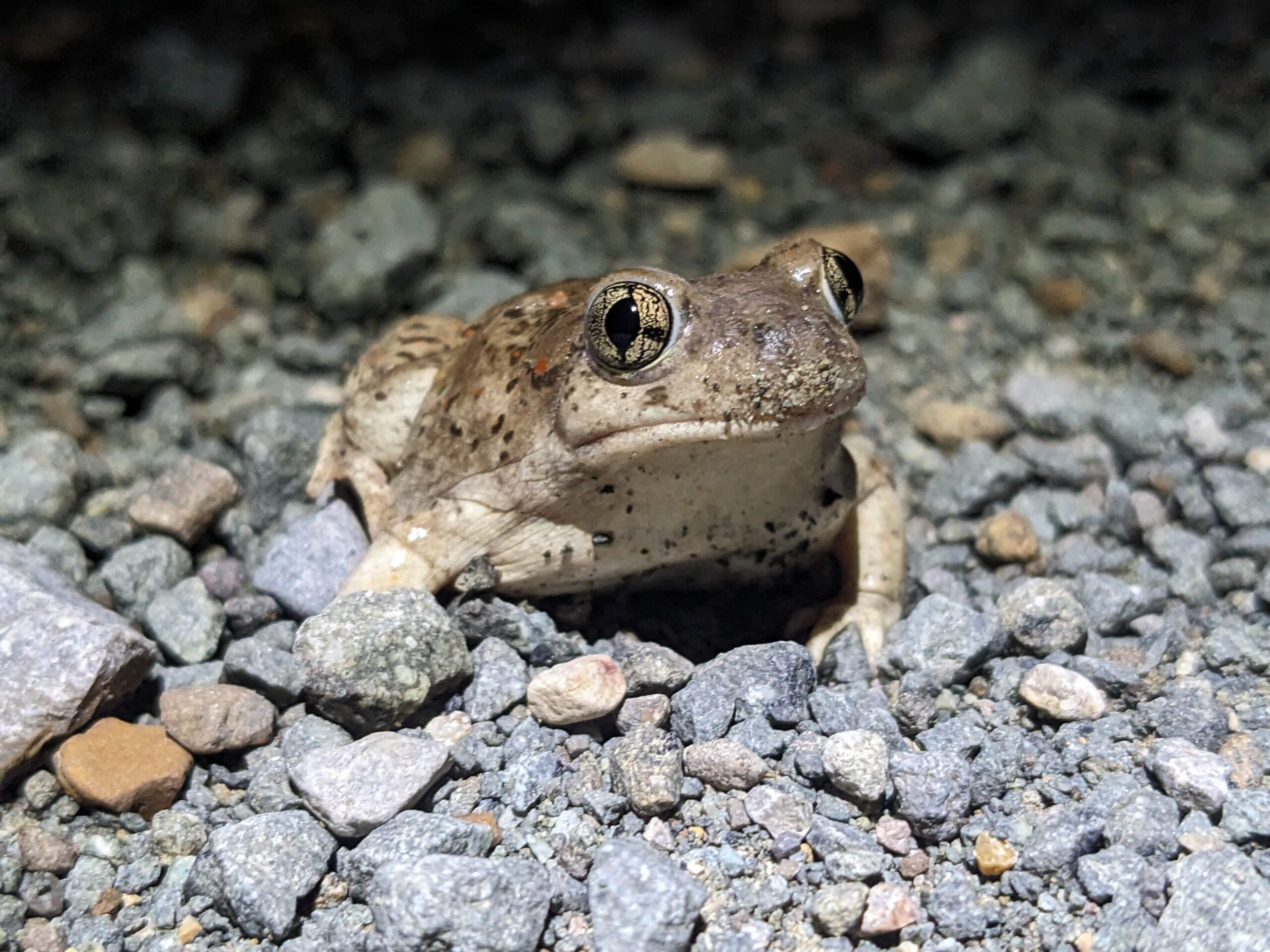
Peanut butter toads
Wonder why the monsoons lag
They dream of rainfall
I thought I would start this month’s blog with a poem about the seasons. For my haiku, I channeled the perspective of a spadefoot toad–Spea multiplicata. It might not seem that they have any thoughts behind those eyes! I tried to imagine a lot goes on behind their blank stare, particularly weather patterns. S. multiplicata is a nocturnal and opportunistic species that spends most of its time in underground burrows dug using their namesake spades. The life history of the toads is closely tied to the monsoons. Monsoon rains rapidly fill up pools in low-lying depressions, which can dry up just as fast. As a result, the average breeding period is only ~1.6 days, and the eggs hatch within 42-48 hours. The tadpoles must complete metamorphosis in as little as three weeks! While there has been enough rain to fill some of the spadefoot’s breeding pools, it’s been inconsistent and patchy.
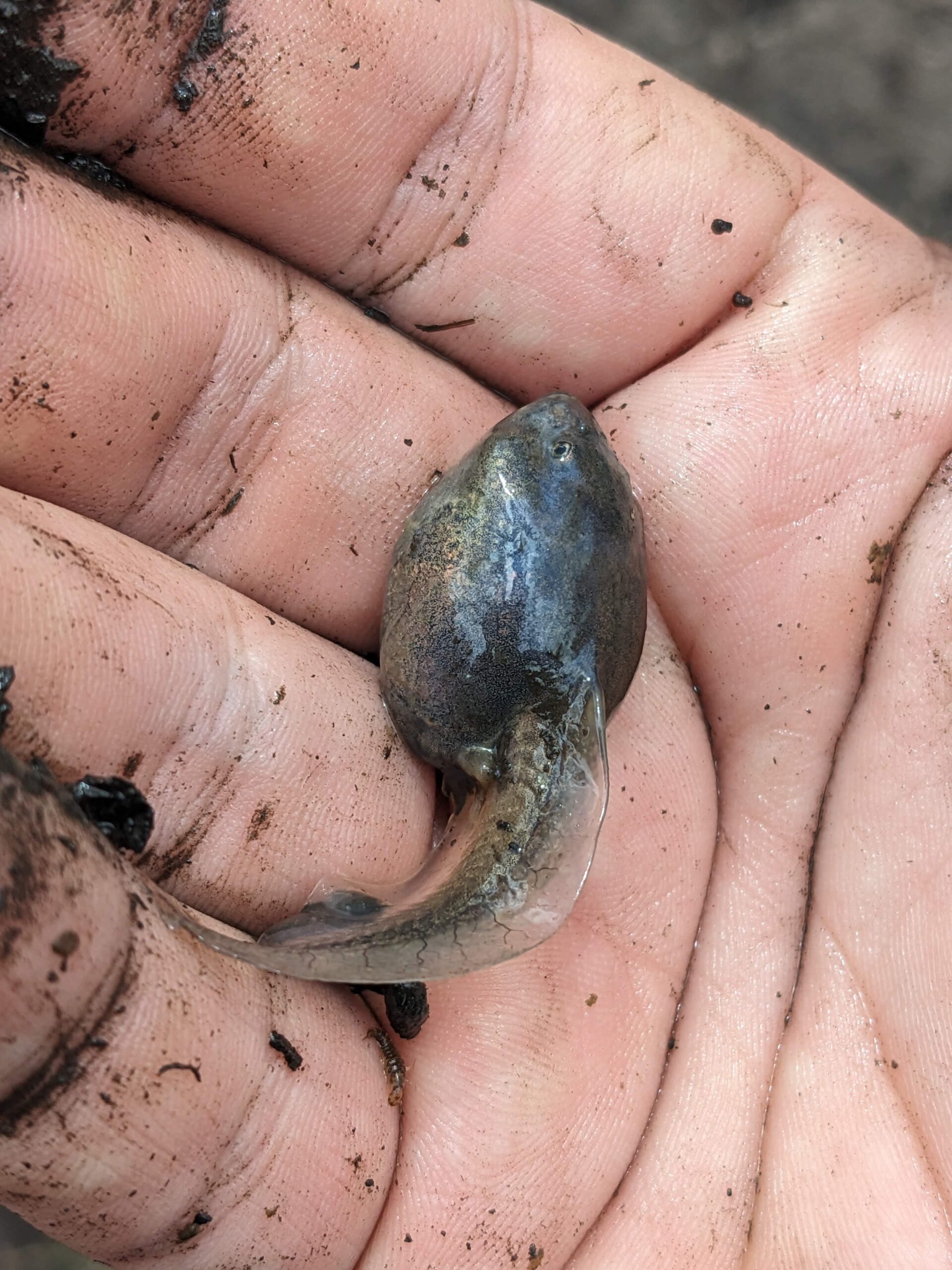
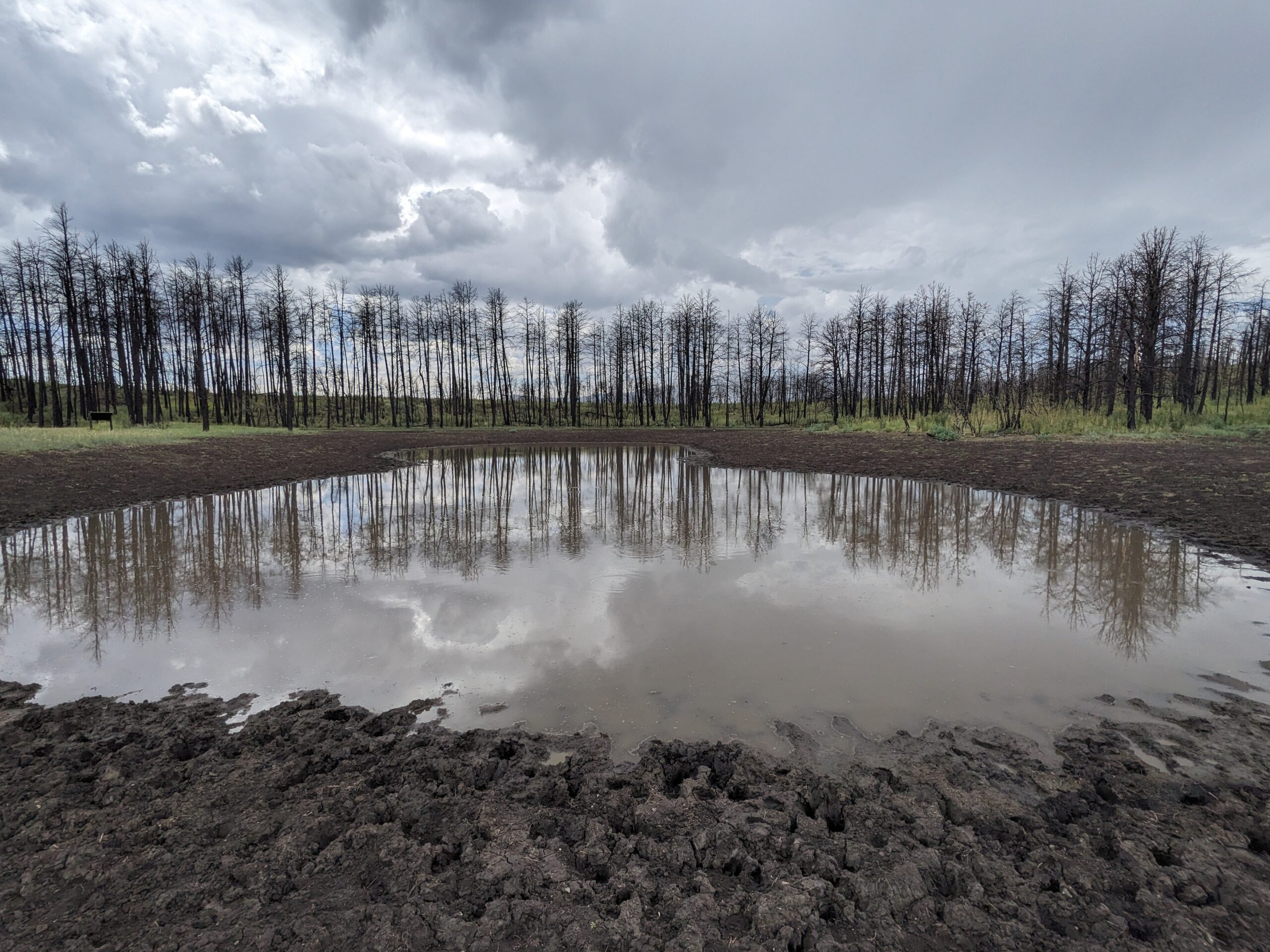
A haiku seemed fitting for a poem, where I could reflect on the monsoons or lack thereof. In my first blog, I alluded to the monsoons that would “soon arrive”. It appears they never did. As a result, the plant abundance and diversity have been subpar this season, making seed collection a challenge. Only a handful of our target species occur in populations large enough to collect from. Of the populations that are borderline in size, grazing from elk, cattle, or feral horses has reduced them to a size below our collecting threshold. However, what we do collect is important for conservation as the populations that are able to reproduce represent local genetics that are resilient when drought-stressed!
Many people working for the Forest Service have noted the abnormal monsoon season this year. Some weather forecasters have even called it a “nonsoon”. Angie Munoz, a wildlife biologist from the Sacramento District, grew up in the Tularosa Basin. Being a local, she grew up accustomed to the typical monsoon patterns, even though they can be unpredictable. Recently, she took us around D2 to help us identify quality scouting localities. She was taken aback at the absence of wildflowers in places where they’d been abundant in the past. Larry and Taylor, our mentors, also took notice. They joined us in scouting Benado Gap to look for some lower-elevation grasses and wildflowers. Below are photos from this year and two years ago in 2021.
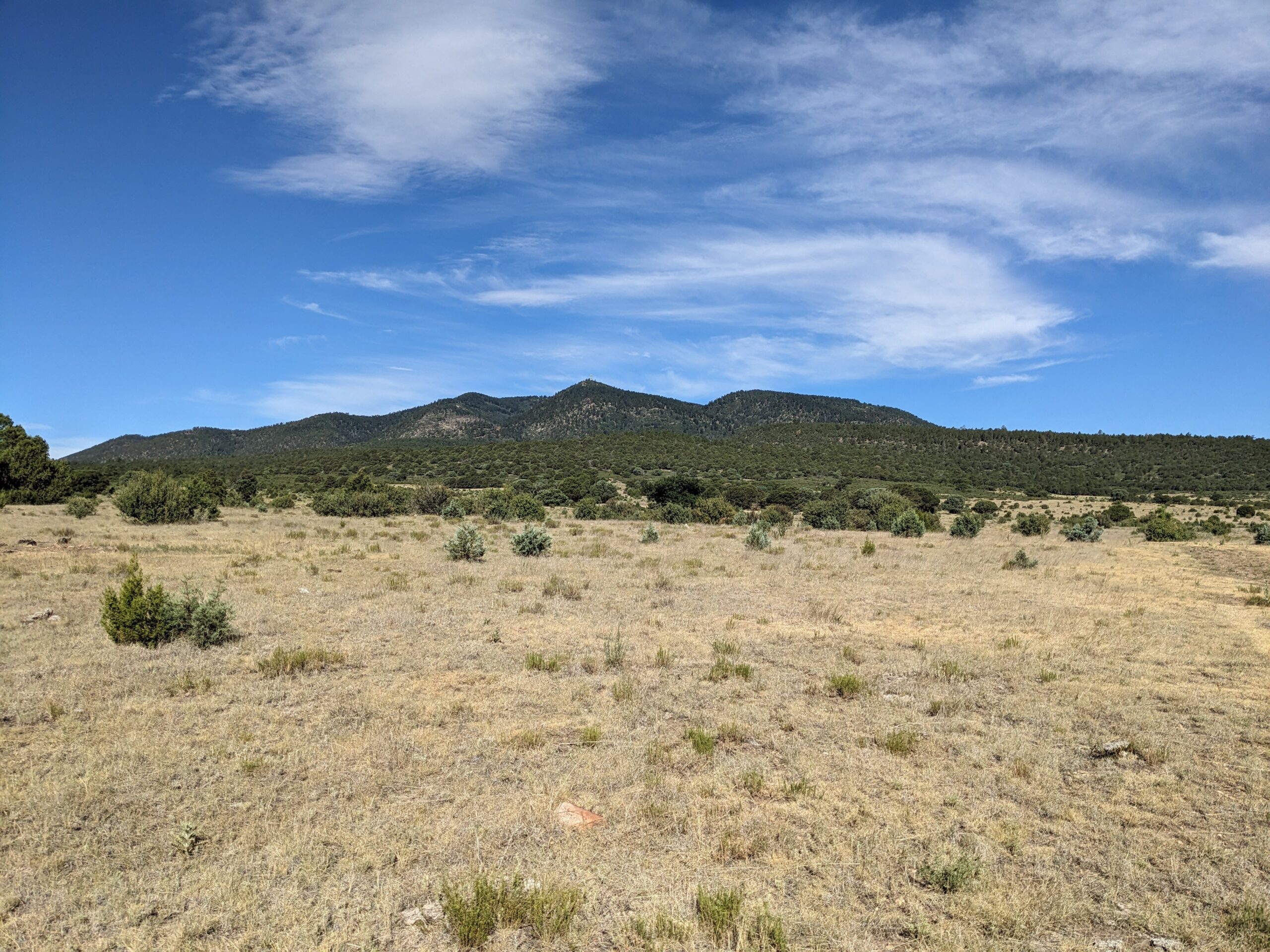
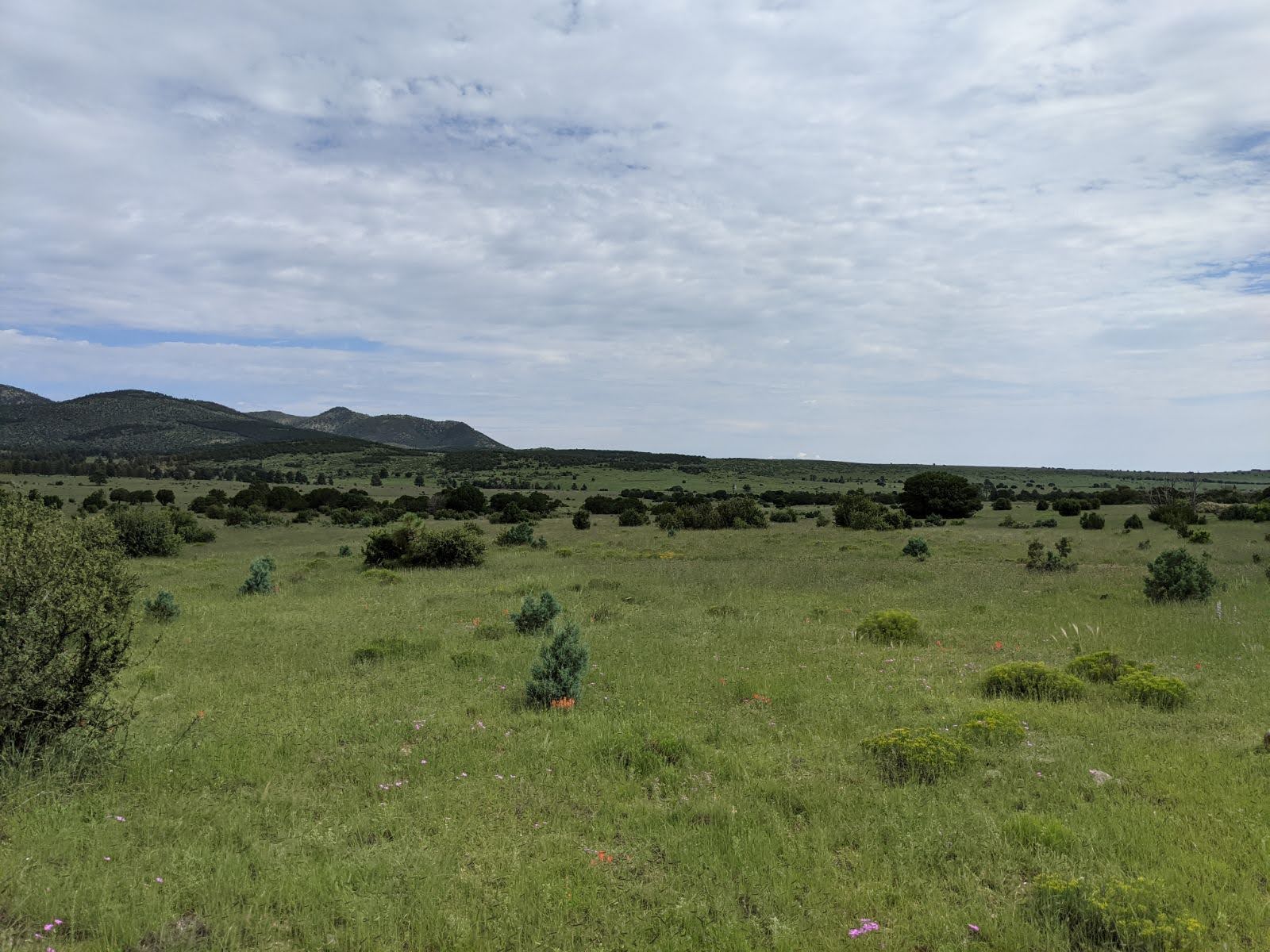
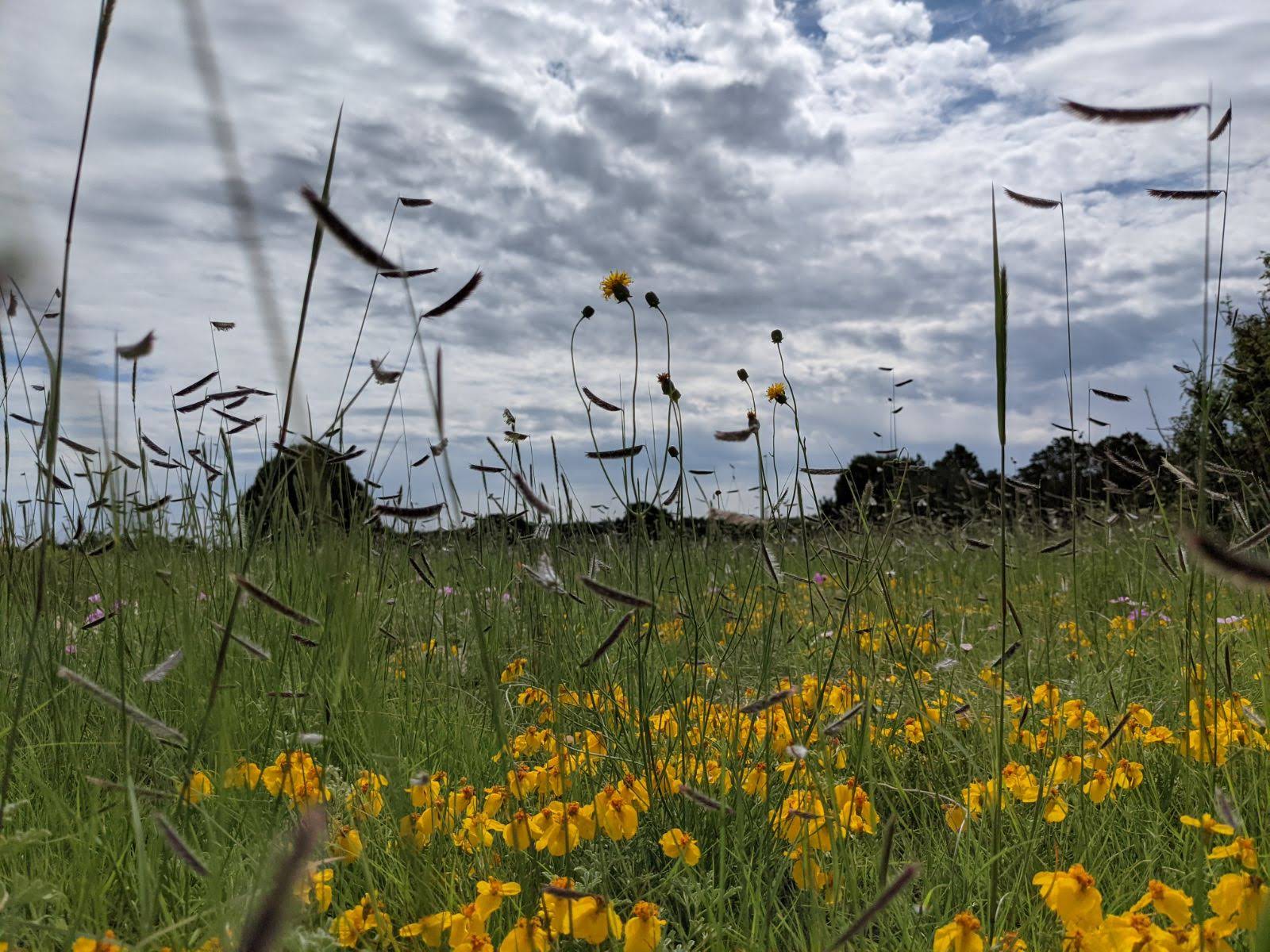
While other crews may be at peak collecting, we’re just getting started! Many species are behind in flowering or fruiting because of the delayed rain, but others are doing their thing and making seeds. Some species we’ve seen set seed include Mertensia franciscana, Monarda fistulosa, Allium geyeri, Allium cernuum, Asclepias asperula, and Pedicularis procera.
Evie and I were able to make our first collection this month–for A. cernuum! We quickly realized what impact differing maturation rates of seeds on the same plant had on planning seed collection. The A. cernuum collection is incomplete, but we hope to revisit the population in a week or so to check on seed maturation progress. Once the fruits mature, the seed capsules quickly dehisce, giving us a narrow window of time to collect. Hopefully, we catch the next wave of mature seeds. Other populations have given us trouble, too. We were going to do a small collection of M. franciscana, but the seeds had dropped before we had a chance to collect them. We also had a couple populations of M. fistulosa we were planning to collect from, but a combination of rain, grazing, and small population size prevented that from happening. After doing seed calculations, one of our larger P. procera populations seemed ideal to collect–we estimated being able to collect 8,000 seeds! Despite having good seed fill, nearly all the seeds were shriveled and soft. Additionally, their insides were a strange black color. We collectively decided not to collect. Collecting is more of an art than a science!
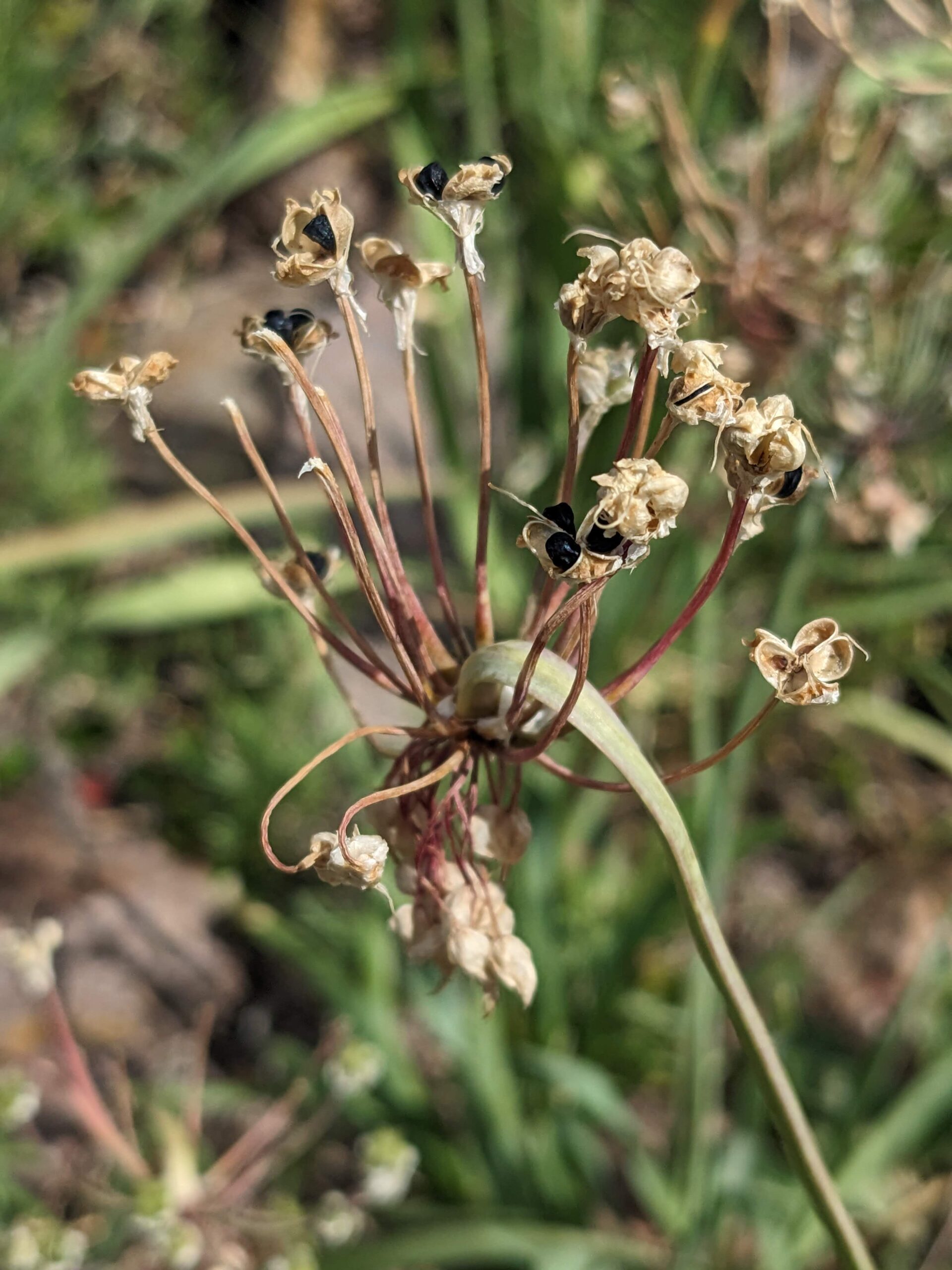
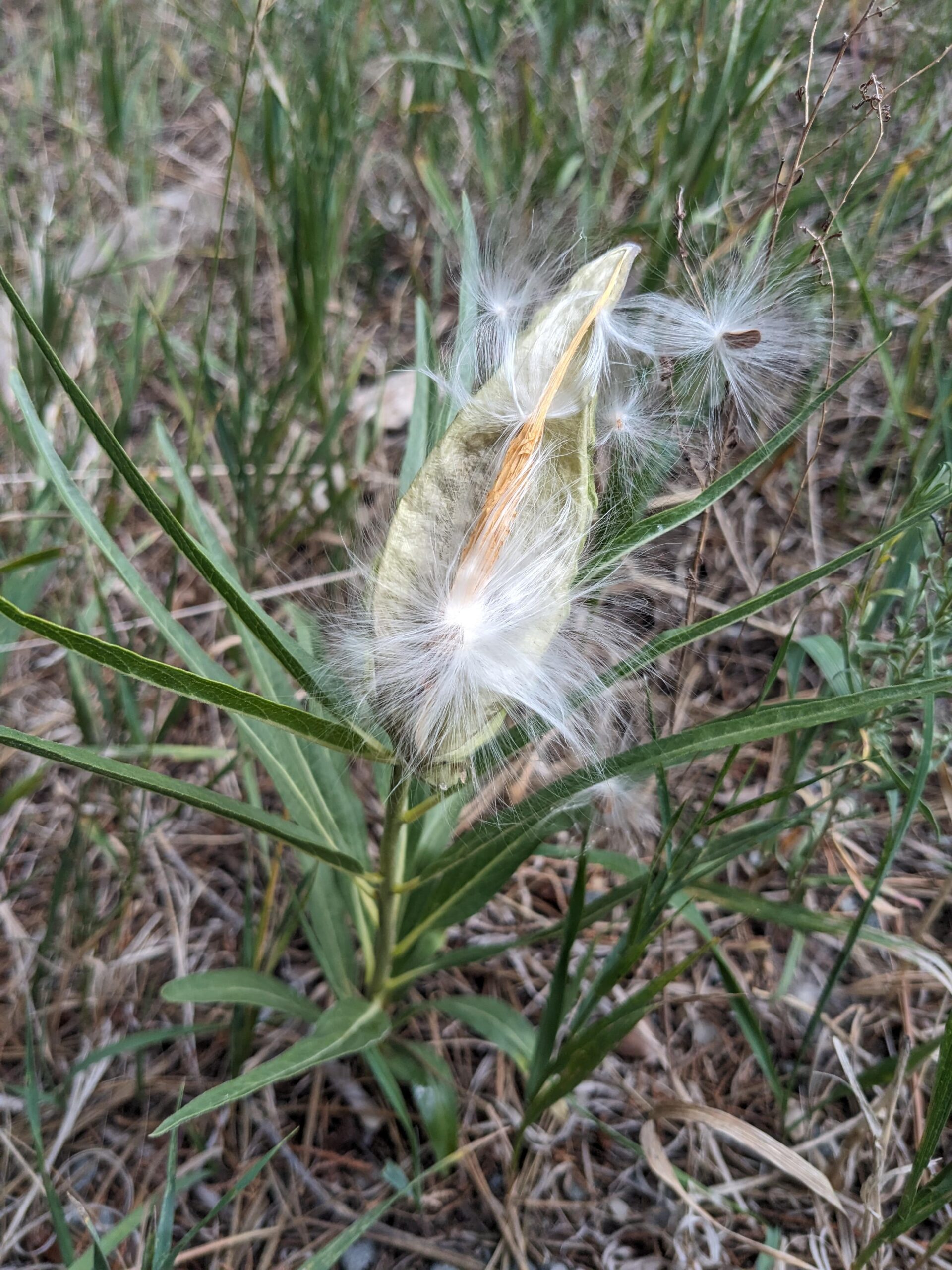
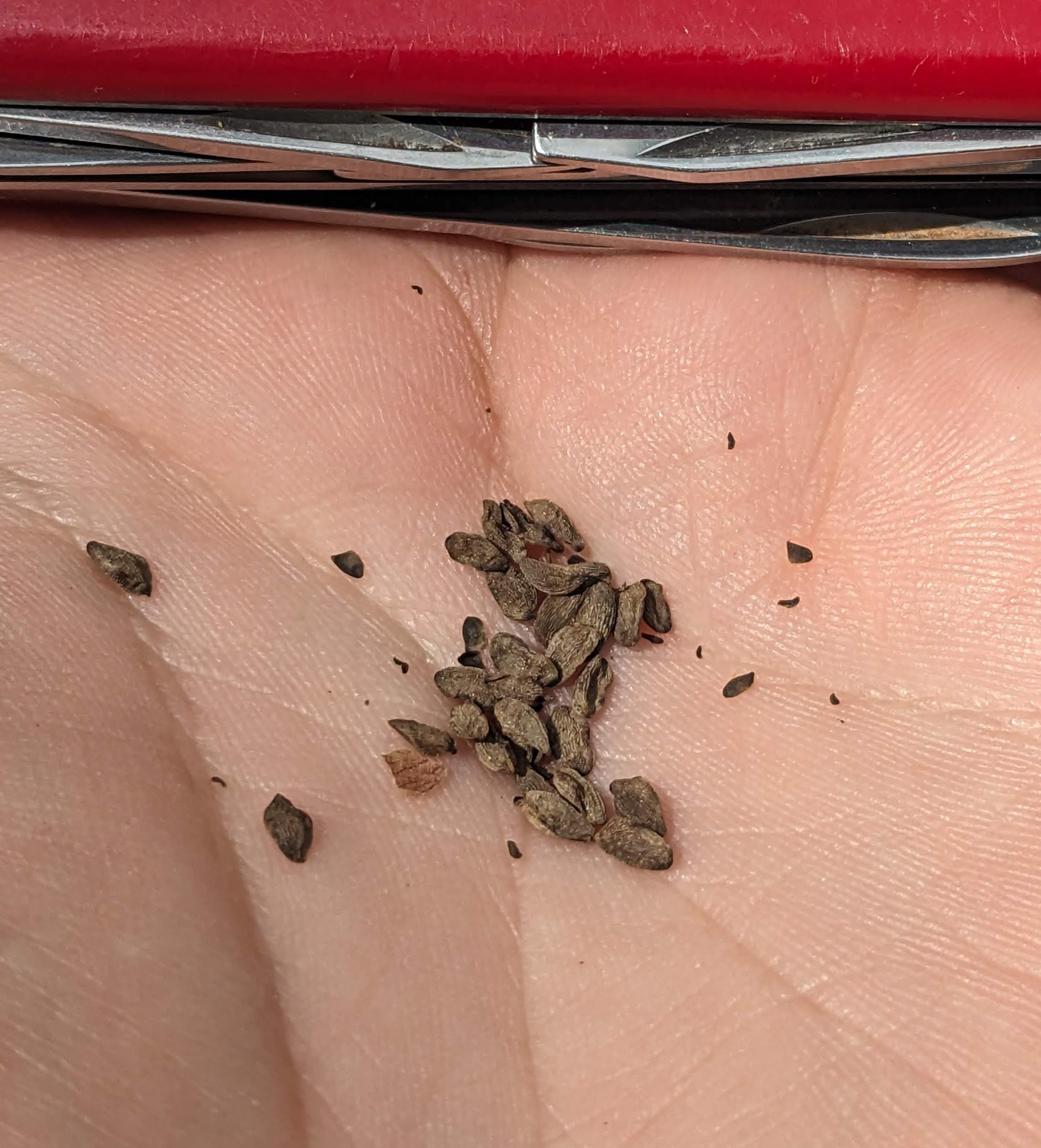
Ironically, we got some decent rain last week! Evie and I tried to sneak in a visit to the nodding onion population last week. Not enough seeds had matured since our first visit. Even if they were ready to collect, the plants were too wet. It almost felt as if we were in the Pacific Northwest, with how foggy and rainy it was! We probably got a month’s worth of rain in 8 hours.
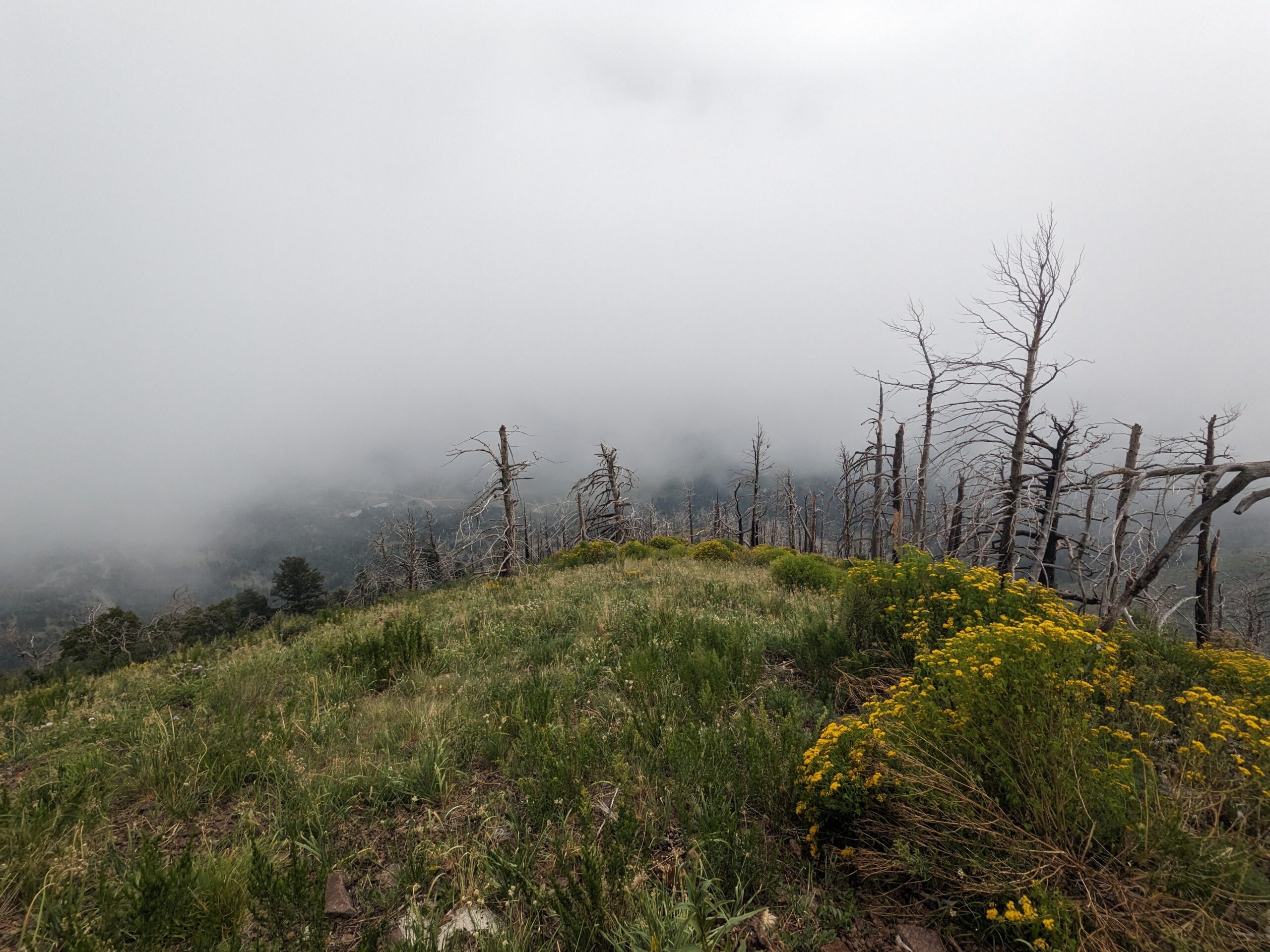
I went herping the night after the rains to see what creatures they unearthed. Since going on my first “road cruise” for herps in early August, I was hooked after seeing a Chihuhuan or Western “hooknose” snake. These nocturnal and diminutive snakes typically max out at 11″, are non-venomous, and prey on spiders, centipedes, and scorpions. Their upturned, hooked nose helps with burrowing in search of prey.
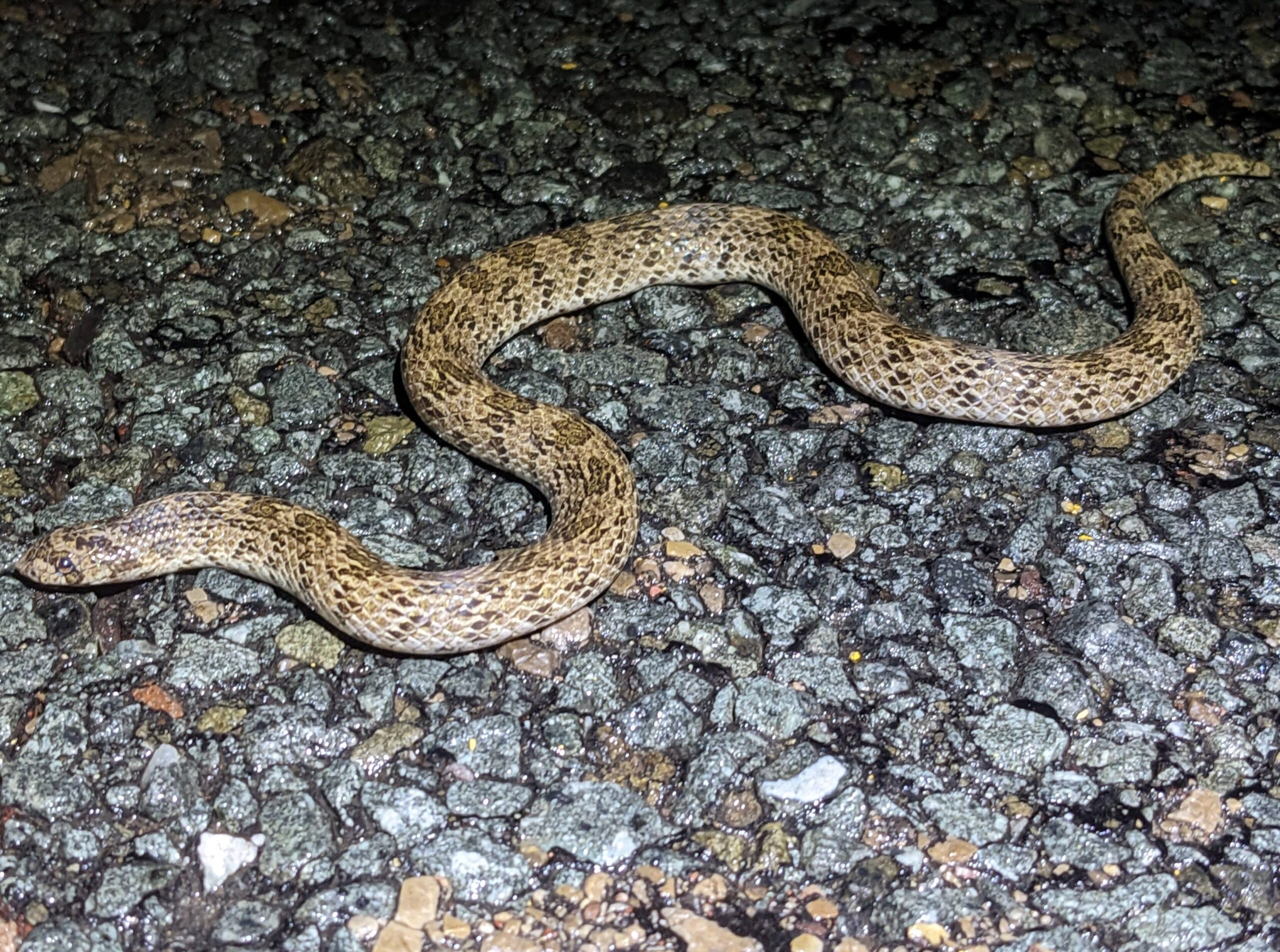
The following pictures include those prey species! When it comes to creepy crawlies (or cutie patooties to invertebrate nerds), nighttime is a great time to see these chitin-clad critters.
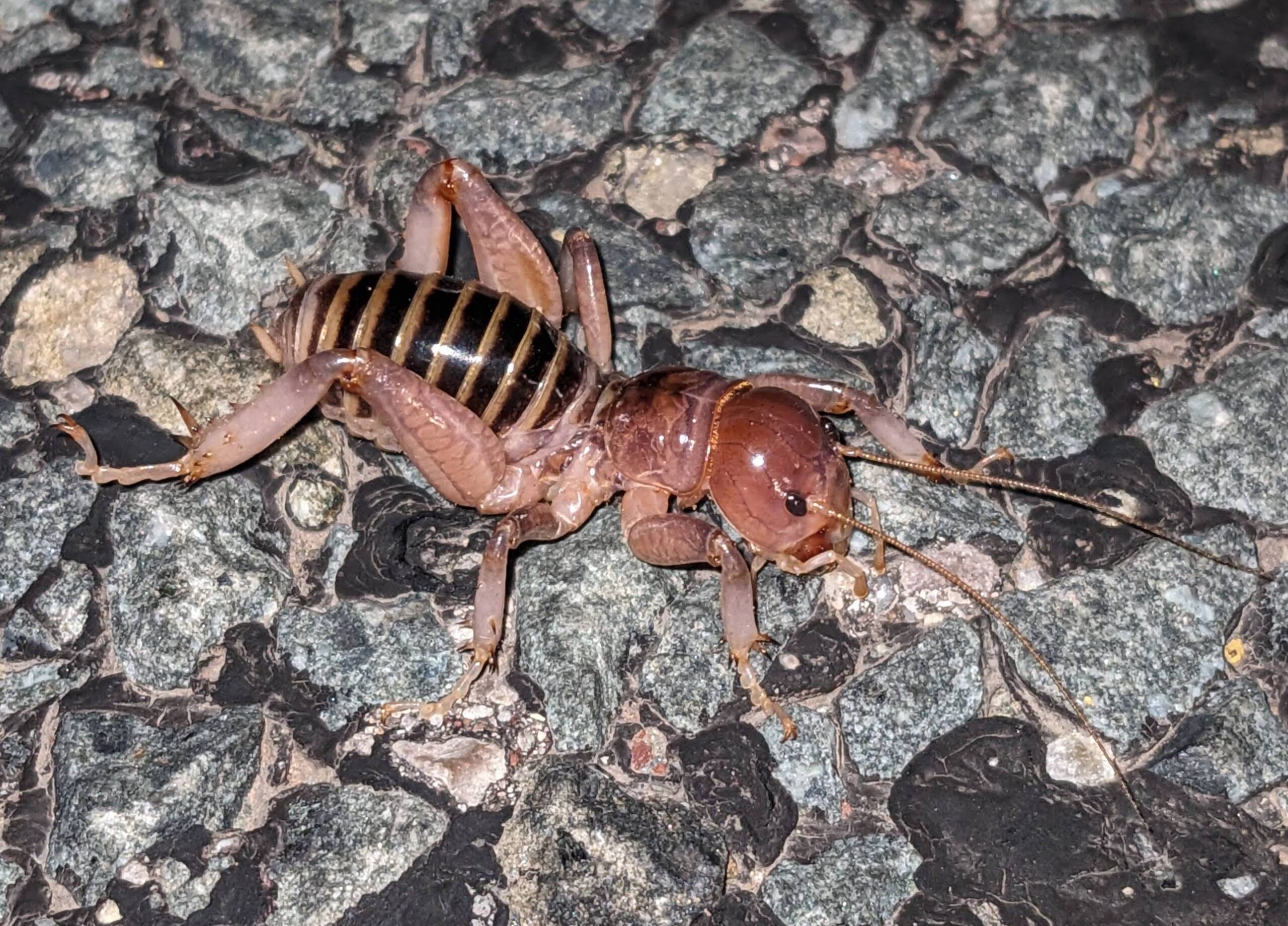
Orthopteran in the Stenopelmatidae family.
